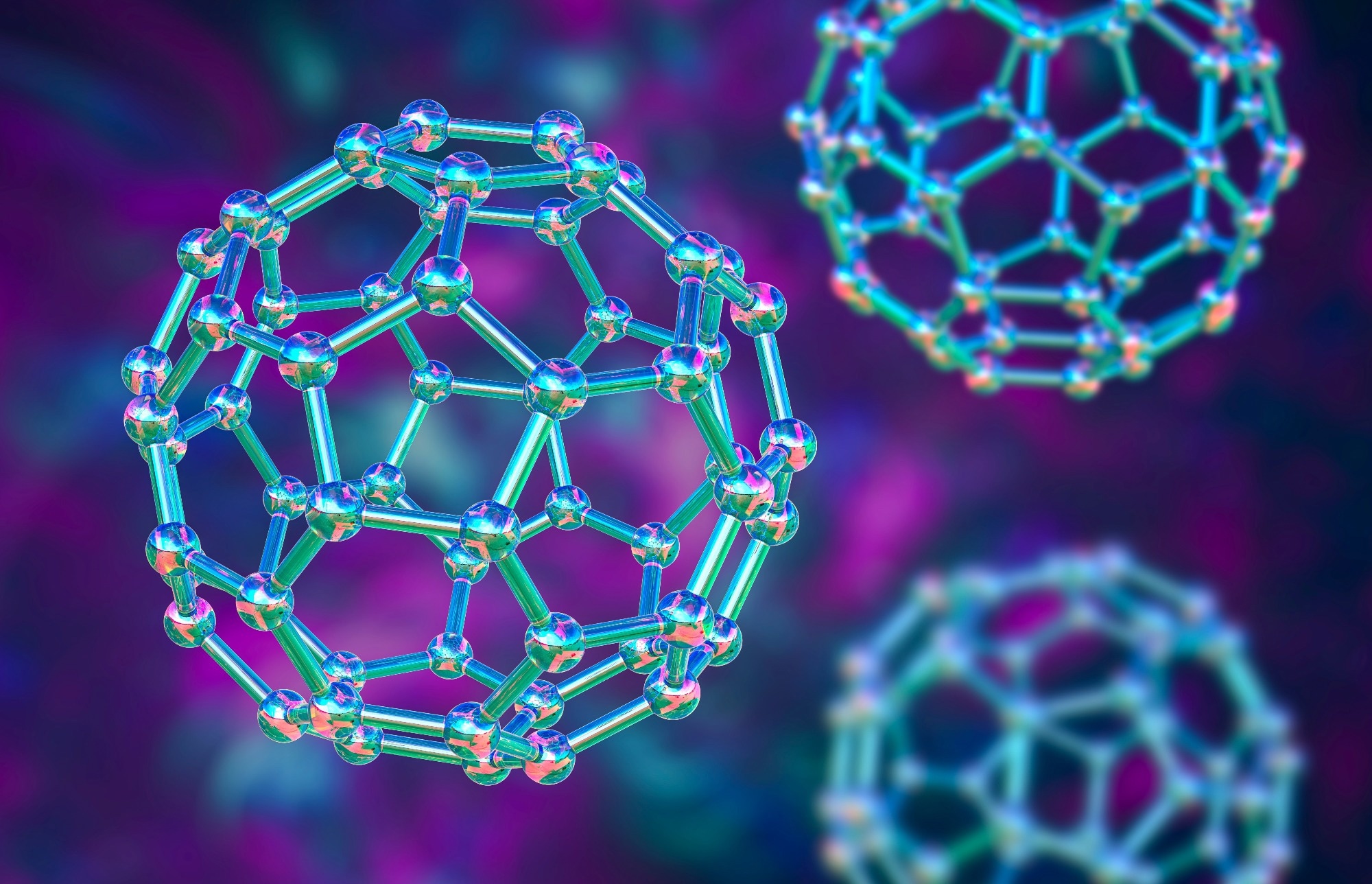 By Ankit SinghReviewed by Lexie CornerApr 30 2025
By Ankit SinghReviewed by Lexie CornerApr 30 2025Nanomaterials are materials with at least one dimension between 1 and 100 nanometers. They are generally grouped into two categories: intentional and incidental nanomaterials.
 Image Credit: Kateryna Kon/Shutterstock.com
Image Credit: Kateryna Kon/Shutterstock.com
Intentional nanomaterials are deliberately engineered to perform specific functions, such as drug delivery or enhanced durability in composites. Incidental nanomaterials are produced unintentionally, often as byproducts of industrial activities or natural processes like combustion or volcanic eruptions.
Understanding the difference between these two types is important. It influences how materials are regulated, how potential risks are assessed, and how safety measures are put in place for workers, consumers, and the environment.
In this article, we explore the differences between intentional and incidental nanomaterials, how they are produced, and why the distinction matters for science, industry, and policy.1-4
What Are Intentional Nanomaterials?
Intentional nanomaterials, also known as engineered nanomaterials (ENMs), are purposefully designed with precise control over their size, shape, and composition. This high degree of control allows researchers to fine-tune the properties of materials at the nanoscale, leading to enhanced performance across a wide range of applications.
In medicine, lipid nanoparticles (LNPs) are engineered to deliver messenger RNA (mRNA) vaccines, such as those developed for COVID-19, by encapsulating genetic material for safe cellular uptake. Gold nanoparticles are another example; when functionalized with antibodies, they can be used for cancer diagnostics, taking advantage of their unique plasmonic properties.2,5
Quantum dots, which are tiny semiconductor nanoparticles with unique optical properties, are widely used in electronics. They emit specific wavelengths of light when exposed to energy sources such as ultraviolet (UV) light or electricity, making them particularly valuable for the development of high-resolution displays in modern televisions and smartphones.6
In the construction industry, the incorporation of nano-silica and titanium dioxide (TiO2) into concrete improves its mechanical strength and self-cleaning ability. Nano-silica enhances the bonding between particles, increasing durability, while TiO2 acts as a photocatalyst, helping to break down organic pollutants on surfaces exposed to sunlight.7
How Are Intentional Nanomaterials Made?
There are two main ways to make intentional nanomaterials.
- Bottom-up methods build materials from atoms or molecules, like chemical vapor deposition, which produces carbon nanotubes.
- Top-down methods start with larger pieces of material and break them down into nanoscale fragments, using processes like milling or lithography.2
Regulatory Oversight
Because intentional nanomaterials are used in products like medicines and electronics, they are carefully regulated. In the European Union, REACH regulations require companies to provide detailed safety data for engineered nanomaterials. In the United States, the FDA requires premarket approval for nanomedicines.
Both systems focus on checking important features like particle size and surface chemistry, helping to reduce risks such as toxicity and environmental buildup.8,9
What Are Incidental Nanomaterials?
Incidental nanomaterials are produced unintentionally during human activities or natural events. Industrial processes like welding, diesel combustion, and mining release nanoparticles made of metals such as iron and aluminum, along with carbon-based particles.
Natural sources, including volcanic eruptions, forest fires, and ocean spray, also generate silica and salt nanoparticles. In addition, consumer products can break down into nanoplastics that measure less than 100 nanometers across.
Unlike intentional nanomaterials, incidental ones tend to be varied in composition and difficult to control. For example, diesel exhaust contains a mix of soot (carbon nanoparticles), heavy metals, and polycyclic aromatic hydrocarbons (PAHs), making it much harder to assess the potential health risks.3,4,7
Regulatory Gaps
Incidental nanomaterials often fall outside the scope of regulations designed for engineered nanomaterials. For example, the European Union’s 2022 definition excludes particles larger than 100 micrometers, which could overlook larger agglomerates that break apart into nanoscale components.
Similarly, the U.S. Environmental Protection Agency’s (EPA) Toxic Substances Control Act (TSCA) does not include specific guidelines for managing airborne nanoparticles produced by industrial processes.4,8
Download your PDF copy now!
Key Differences at a Glance
| Aspect |
Intentional Nanomaterials |
Incidental Nanomaterials |
| Origin |
Lab-engineered or industrially manufactured |
Byproducts of combustion, industrial processes, or natural phenomena |
| Composition |
Homogeneous, tailored for function (e.g., Au, TiO2) |
Heterogeneous, variable (e.g., soot, metal mixtures) |
| Regulation |
Strict premarket testing (FDA, REACH) |
Limited oversight; often excluded from definitions |
| Examples |
Quantum dots, lipid nanoparticles, carbon nanotubes |
Diesel exhaust particles, welding fumes, nanoplastics |
How the Intentional vs Incidental Divide Affects Safety and Regulation
The distinction between intentional and incidental nanomaterials has real consequences for safety assessments, regulatory frameworks, and environmental management.
Regulatory Pathways
Intentional nanomaterials are subject to formal risk assessments before reaching the market.
For example, the EU’s Nanomedicine Directive requires developers to demonstrate the biocompatibility and biodegradability of new nanomaterials. In contrast, incidental nanomaterials (such as airborne ultrafine particles (UFPs) generated during industrial activities) are typically managed under broader air quality regulations.
These general standards focus on measuring mass concentration, rather than more sensitive metrics like particle number or surface area, which are often more important when assessing the potential toxicity of nanoparticles.3,5
Occupational Health Risks
Workers in sectors like construction and manufacturing may be exposed to both types of nanomaterials. Intentional nanomaterials, such as nanosilica used in concrete, can pose inhalation risks that contribute to lung diseases like fibrosis.4,7
Incidental nanoparticles carry additional concerns. Welders exposed to manganese oxide nanoparticles, for instance, have shown neurological effects similar to those seen in Parkinson’s disease.
Studies have also found that 3D printing processes release incidental nanoparticles, including volatile organic compounds (VOCs) and metal aerosols, underlining the need for real-time workplace monitoring and stronger exposure controls.4,10
Environmental Impact
Incidental nanomaterials are a growing source of environmental pollution. In urban areas, road traffic alone can release around 9 kilograms of nanoparticles into the environment each day, contributing to soil and water contamination.
Even nanomaterials designed for beneficial use can create unintended problems: for instance, TiO2 used in sunscreens can wash into oceans, where it impacts marine ecosystems.3,7
Nanotoxicology Insights
Coating nanoparticles with polyethylene glycol (PEG) is a common strategy used in drug delivery to help materials avoid detection by the immune system. However, long-term exposure raises concerns about possible immune system effects over time.3,5
Meanwhile, incidental nanomaterials present different risks. Diesel exhaust nanoparticles have been shown to cross the placental barrier, potentially affecting fetal development. These findings highlight why both intentional and incidental nanoparticle interactions with biological systems need close study.3,5
Challenges in Managing Nanomaterials: What Comes Next?
Detecting incidental nanomaterials in complex environments like food, water, and cosmetics remains a major technical challenge. Although emerging techniques such as single-particle Inductively Coupled Plasma Mass Spectrometry (ICP-MS) and hyperspectral imaging offer promise, these methods still lack widespread standardization.9
To close regulatory gaps, international harmonization of definitions across the EU, the U.S., and Asia will be crucial. Without this alignment, regulatory loopholes are likely to persist. Experts also emphasize the need for full lifecycle assessments that track nanomaterials from production through to disposal—a priority highlighted by the 2019 Global Summit on Regulatory Sciences.
Meanwhile, new technologies could help tackle these challenges. Advances in bioinspired nanomaterials, such as virus-like particles designed for targeted therapies, and the use of artificial intelligence (AI) to model nanoparticle behavior, are expected to improve both safety assessments and material design.1,3,4
By strengthening regulatory frameworks and advancing detection technologies, society can continue to benefit from the promise of nanotechnology while minimizing its unintended risks.
Interested in how nanomaterials are regulated worldwide?
Explore Global Nanomaterial Regulation: A Country-by-Country Comparison for insights into how different regions are approaching safety and innovation.
References and Further Reading
- Barhoum, A. et al. (2022). Review on Natural, Incidental, Bioinspired, and Engineered Nanomaterials: History, Definitions, Classifications, Synthesis, Properties, Market, Toxicities, Risks, and Regulations. Nanomaterials, 12(2), 177. DOI:10.3390/nano12020177. https://www.mdpi.com/2079-4991/12/2/177
- Jeevanandam, J. et al. (2018). Review on nanoparticles and nanostructured materials: history, sources, toxicity and regulations. Beilstein Journal of Nanotechnology, 9, 1050–1074. DOI:10.3762/bjnano.9.98. https://www.beilstein-journals.org/bjnano/articles/9/98
- HochellaJr., M. F. et al. (2019). Natural, incidental, and engineered nanomaterials and their impacts on the Earth system. Science. DOI:10.1126/science.aau8299. https://www.science.org/doi/10.1126/science.aau8299
- Allan, J. et al. (2021). Regulatory landscape of nanotechnology and nanoplastics from a global perspective. Regulatory Toxicology and Pharmacology, 122, 104885. DOI:10.1016/j.yrtph.2021.104885. https://www.sciencedirect.com/science/article/pii/S0273230021000258
- Rodríguez-Gómez, F. D. et al. (2025). Regulatory pathways and guidelines for nanotechnology-enabled health products: A comparative review of EU and US frameworks. Frontiers in Medicine, 12, 1544393. DOI:10.3389/fmed.2025.1544393. https://pmc.ncbi.nlm.nih.gov/articles/PMC11919859/
- Huang, Y. et al. (2020). Advances in Quantum-Dot-Based Displays. Nanomaterials, 10(7), 1327. DOI:10.3390/nano10071327. https://www.mdpi.com/2079-4991/10/7/1327
- Mohajerani, A. et al. (2019). Nanoparticles in Construction Materials and Other Applications, and Implications of Nanoparticle Use. Materials, 12(19), 3052. DOI:10.3390/ma12193052. https://www.mdpi.com/1996-1944/12/19/3052
- New EC recommendation on the definition of nanomaterial. (2022). COSlaw.eu - Guiding through EU Cosmetics Regulations. https://coslaw.eu/european-commission-recommendation-on-the-definition-of-nanomaterial/
- Contado, C. (2015). Nanomaterials in consumer products: A challenging analytical problem. Frontiers in Chemistry, 3, 154429. DOI:10.3389/fchem.2015.00048. https://www.frontiersin.org/journals/chemistry/articles/10.3389/fchem.2015.00048/full
- Sampath, T. et al. (2024). Safety and Toxicity of 3D Printed Medical Products. In Compendium of 3D Bioprinting Technology (pp. 221–237). CRC Press. DOI:10.1201/9781003505198-11. https://www.taylorfrancis.com/chapters/edit/10.1201/9781003505198-11/safety-toxicity-3d-printed-medical-products-thamizharasan-sampath-prakash-srinivasan-timiri-shanmugam-sandhiya-thamizharasan-suresha
Disclaimer: The views expressed here are those of the author expressed in their private capacity and do not necessarily represent the views of AZoM.com Limited T/A AZoNetwork the owner and operator of this website. This disclaimer forms part of the Terms and conditions of use of this website.